Insights
User-Generated Content in 2025: What Should You Know?
On Digitals
22/08/2025
36
Today’s consumers are smart. Really smart. They’ve seen every marketing trick in the book, and they can spot a sales pitch from a mile away. So what’s the solution? User-generated content, one of the most powerful tools you can use to build genuine connections with your audience and grow your business.
What Is User-Generated Content and Its Impact?
What exactly is user-generated content?
User-generated content, or UGC as we like to call it, is pretty straightforward. It’s any content that your customers create about your brand. We’re talking about photos, videos, reviews, social media posts, even blog comments that come from real people, not your marketing team.
This isn’t exactly a new concept. This type of content has been around since the early days of the internet through forums, blogs, and wikis. But with social media platforms exploding in popularity, UGC has transformed into a marketing powerhouse, acting as word-of-mouth marketing but on steroids.
Why does user-generated content work so well?
People want authenticity. They’re tired of polished, perfect advertisements that feel disconnected from reality and only want them to make purchases. User-generated content gives them exactly what they’re looking for, because it feels genuine instead of scripted. When your customers share their real experiences, it creates social proof that money can’t buy.
Think about it. When you see a traditional ad, you know the company paid for it. But when you see your friend posting about a product they love? That carries weight.
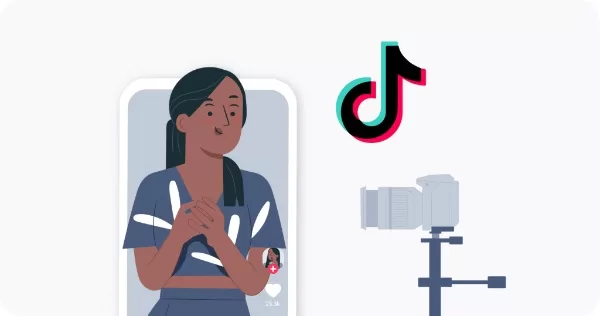
User-generated content has become a key part of digital marketing
What Are The Benefits of User-Generated Content?
Can user-generated content actually reduce your marketing costs?
You bet it can. Professional marketing campaigns aren’t cheap. You’re looking at costs for photographers, videographers, copywriters, and media placement. Those expenses add up fast.
With user-generated content, your customers become your content creators. Brands can stretch their content budgets much further by leveraging authentic customer photos, reviews, and posts across their websites, ads, and social channels.
The money you’d typically spend on content production? You can redirect that toward scaling your campaigns or improving customer experience. Attracting and prompting user-generated content is another story on its own, but we will get to that later.
Does user-generated content really drive better engagement and sales?
The research is pretty clear on this one. People trust other people more than they trust brands. Shoppers are six times more likely to trust user-generated content than brand-created visuals. This trust translates directly into higher click-through rates and better conversion numbers because to consumers, that’s a vote of confidence which wasn’t bought.
The engagement numbers are just as impressive. Campaigns using this content type often see engagement increases of up to 50% compared to traditional content.
How does user-generated content help with SEO and online visibility?
User-generated content can be an SEO goldmine. Every review, testimonial, or social post that mentions your business creates more content for search engines to find and index.
This means more opportunities for your brand to show up in search results. But it gets better. User-generated content often includes the natural language and long-tail keywords that real customers actually use when searching. This makes your brand more discoverable for the terms people are really typing into Google.
Plus, when happy customers share your products on their own platforms, you often get valuable backlinks. Even though they might not directly affect rankings, they can still work wonders with enhancing your reputation and trust on the market.
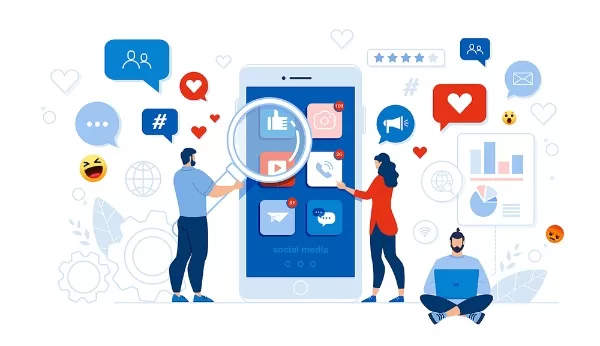
It comes with many tremendous benefits for businesses
What Are The Different Types of User-Generated Content?
What kinds of user-generated content should you be collecting?
User-generated content comes in more varieties than you might think, which include:
- Social media posts of all kinds, including photos, Instagram reels, and TikTok videos.
- Customer reviews and star ratings on your e-commerce site or third-party platforms.
- Testimonials that you can feature on your website or social channels.
- Blog posts or guest articles written by your customers about their experiences.
- Branded hashtag campaigns where people share their stories and experiences.
- Online forums or discussion boards where your brand gets mentioned naturally.
These different formats give you flexibility in how you showcase your community’s voice. You might highlight reviews on product pages while repurposing Instagram posts in your advertising campaigns.
What’s the difference between organic and paid user-generated content?
Not all user-generated content is created equal, organic content happens naturally. This can happen when a customer who’s so happy with their purchase that they snap a photo of your product and share it on social media. They’re not getting paid for it. They’re just genuinely excited about their experience.
Paid UGC is different. This usually involves working with micro-influencers or content creators who are compensated for creating authentic-looking content about your brand. It still looks and feels like user-generated content, but there’s a business relationship behind it.
Both types have their place in your marketing strategy. Organic content provides genuine customer advocacy that you can’t buy, while the paid counterpart gives you more control over messaging and timing while still maintaining that authentic feel because the one responsible for the content is still the influencer.
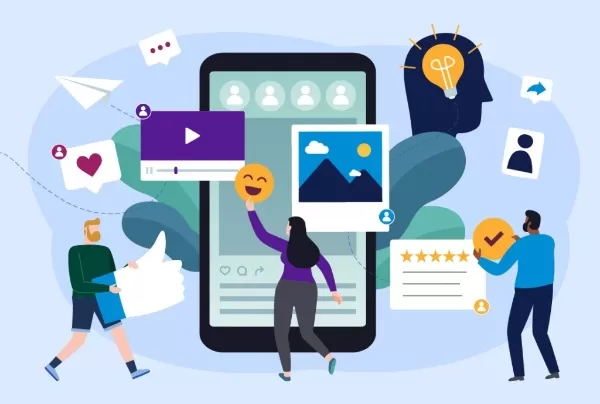
How businesses can encourage and utilize user-generated content
How to Encourage More UGC from Your Customers
How do you actually motivate customers to create content for your brand?
Most customers won’t create user-generated content unless you give them incentives. And sometimes, you need to make it worth their while or just plain fun.
You can try running branded hashtag campaigns that get customers excited about sharing their experiences. Think about creating a contest where people post photos of your product in action using a specific hashtag. It’s simple, it’s been done many times, but it works.
Discounts, giveaways, or the chance to be featured on your official social media pages can turn casual customers into active content creators. People love recognition, and they love getting something in return for their effort.
Most importantly, though, timing is key. Ask for reviews or visual content at the right moments, like right after a purchase or in a follow-up email when the experience is still fresh in their minds. A satisfied customer is much more likely to share their experience when you catch them at the right time.
What tools can help you manage all this user-generated content?
Collecting user-generated content is only half the battle. Once you start getting photos, reviews, and posts from customers, you need to organize and showcase them effectively. This is where the right tools become essential.
Platforms like EmbedSocial and similar tools make it easy to collect, filter, and display customer content across your website and marketing channels. Instead of manually hunting down every mention of your brand, these platforms do the heavy lifting for you.
Social media management tools can monitor hashtags and mentions automatically, making it much easier to find high-quality posts that are worth resharing. Many of these tools even include moderation features to make sure the content aligns with your brand values before it goes live.
How to Use User-Generated Content
Where should you put user-generated content to get the best results?
User-generated content only drives results when you put it in the right places and you’ll get the most value by featuring UGC where customers make their key decisions:
- On your website and product pages: Add reviews, testimonials, and customer photos to boost credibility and conversion rates. When potential customers see real people using and loving your products, it removes doubt.
- In your social media feeds: Showcase reposts or tagged content to build community and authenticity. This shows that real people are engaged with your brand, not just paid influencers.
- In email campaigns: Include user-generated content to make your newsletters more engaging and relatable. Real customer stories are much more compelling than corporate messaging.
- In your advertising: Amplify user-generated content in paid campaigns to build trust and cut through ad fatigue. Authentic content from real customers performs better than polished ads.
How do you give proper credit and get permission from content creators?
This is crucial, and it’s something many businesses get wrong. You should always ask for permission before reposting someone’s content. A simple direct message or comment requesting consent shows respect and often leads to positive responses. Most customers are happy to have their content shared if you ask nicely, or again, when you provide some sorts of incentive.
Beyond getting permission, here are the best practices you should follow:
- Always tag creators when you share their posts.
- Give proper credit in captions or descriptions.
- Acknowledge their role in helping tell your brand’s story.
This approach does two important things. First, it keeps you on the right side of copyright laws. Second, it builds goodwill with your audience. When customers see that you treat content creators with respect, they’re more likely to have a better opinion on your brand.
What challenges might you face with user-generated content?
Like any marketing strategy, user-generated content comes with its own set of challenges. But don’t let that scare you off. Most issues can be prevented with proper planning.
- Inappropriate content: Some customers might share content that doesn’t align with your brand values. You can mitigate this by setting clear community guidelines and using moderation tools to review content before it goes live. You can also choose not to feature them at all.
- Copyright concerns: Always confirm permission before sharing someone else’s content, and use legal checks when necessary. This protects both you and your customers.
- Privacy risks: Make sure you’re not accidentally exposing sensitive information, especially in customer photos or reviews. Be particularly careful with content that might include personal details.
Real Success Stories with User-Generated Content
Can a hashtag campaign really boost brand awareness?
Let’s look at a campaign that changed how we think about beauty standards. Dove’s #RealBeauty campaign encouraged women to share authentic, unedited photos of themselves. It was a resounding success because it’s a movement that went above just simple promotion.
It tapped into authentic stories and turned them into a global wave of awareness that traditional advertising could never have achieved. Women weren’t just sharing photos. They were sharing their stories, their struggles, and their victories.
Sometimes, you can go for a fun approach. Take Coca-Cola’s “Share a Coke” campaign. The concept was straightforward: put people’s names on bottles and cans and encourage them to share photos with their personalized drinks.
But the results were anything but simple. The campaign transformed a basic product into a social experience. These cans were flying off the shelves like hot cakes and photos of Coca-Cola were everywhere. This type of user-generated content initiative shows how giving customers a personal stake in your brand can directly translate into conversions and repeat business.
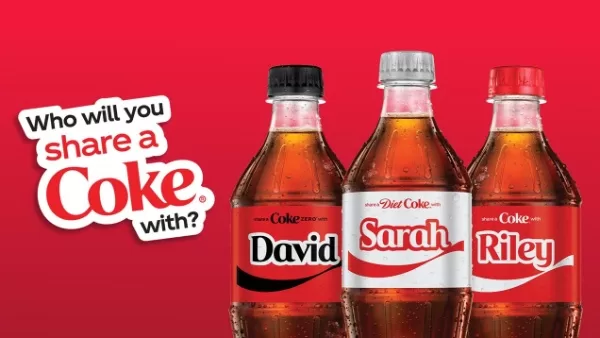
The Share A Coke is a resounding success in making use of user-generated content
How can user-generated content drive actual sales and customer loyalty?
Sometimes the best examples are the simplest ones.
The lesson? When you make customers part of your brand story, they don’t just buy from you once. They become loyal advocates who keep coming back and bringing others with them.
How to Measure User-Generated Content Success
What metrics actually matter for user-generated content?
You need to track the metrics that reveal real impact:
- Engagement rates: Look at likes, shares, comments, and saves. These show how much people are actually interacting with your user-generated content, not just seeing it.
- Click-through rates: Are people inspired to explore your brand further after seeing user-generated content? This metric tells you if UGC is driving traffic to your website or product pages.
- Conversion lift: This is the big one. Compare how many customers purchase after engaging with user-generated content versus those who don’t. This shows the direct impact on your bottom line.
- Dwell time: When people spend more time on pages featuring user-generated content, it signals that the content is engaging and valuable.
- Sentiment analysis: Track the tone of conversations around your brand. User-generated content should improve how people feel about your company over time.
When you look at these metrics together, you get a complete picture of how user-generated content affects awareness, engagement, and actual business results.
How do you compare user-generated content ROI to other marketing channels?
Every marketing dollar needs to prove its worth, and user-generated content often outperforms traditional content because it leverages customer voices instead of requiring heavy advertising spend.
- Cost per acquisition: See if user-generated content lowers your customer acquisition costs compared to paid campaigns. Often, it does because customers trust peer recommendations more than ads.
- Long-term customer loyalty: Measure repeat purchases or subscription renewals from customers who discovered you through user-generated content. These customers often stick around longer.
- Customer lifetime value: Assess whether customers who engage with user-generated content spend more over time. Loyal customers typically have higher lifetime values.
- Content production efficiency: Compare the cost of creating branded content versus sourcing and curating user-generated content. UGC is usually more cost-effective, generally.
When you put these metrics side by side with your other marketing channels, you’ll find whether user-generated content is a worthwhile investment for you.
The Future of User-Generated Content
What trends are shaping the future of user-generated content?
User-generated content isn’t standing still. It’s evolving along with how people consume and create digital content, and the trends emerging now will shape marketing for years to come.
- Short-form and live video are taking over: TikTok, Instagram Reels, and live streams have changed how people create content. Users want to share quick, authentic clips that feel spontaneous and real. This trend isn’t slowing down.
- Immersive formats are becoming mainstream: We’re seeing more AR try-on filters, virtual community spaces, and interactive experiences. User-generated content is moving beyond static posts into environments where customers can actively participate.
- AI is personalizing user-generated content feeds: Platforms are using artificial intelligence to serve the most relevant user content to each person. This means brands can leverage data-driven personalization at scale, making UGC more targeted and effective.
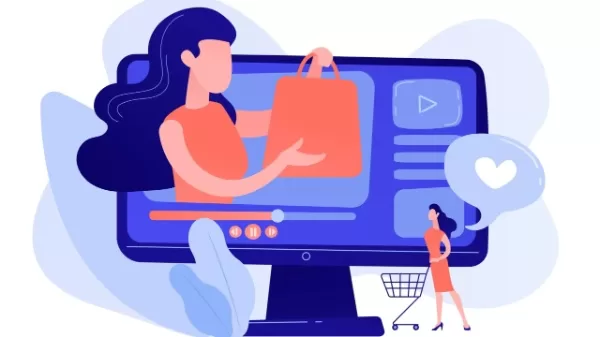
What does user-generated content have to offer in the future?
FAQs About User-Generated Content
Why is user-generated content important for brands?
UGC builds trust and authenticity that traditional advertising struggles to achieve. Research shows that 79% of people say this content type highly impacts their purchasing decisions because it feels more genuine than branded content.
What are the different types of user-generated content?
UGC comes in many forms: social media posts, product reviews, testimonials, blog posts, forum discussions, branded hashtag campaigns, and customer-submitted videos and photos.
How do I encourage more user-generated content?
You can spark user-generated content by launching hashtag campaigns, hosting contests, offering incentives like discounts or features, directly asking for reviews at key touchpoints, or regularly featuring customer content on your official channels.
How do I use user-generated content safely and legally?
Always get explicit permission before reusing someone’s content. Credit creators by tagging them in posts, and make sure you respect copyright and privacy rules. Having clear usage guidelines protects both your brand and your customers.
What are the risks of UGC, and how do I manage them?
The main risks include inappropriate content submissions, copyright issues, and privacy concerns. You can manage these by setting clear community guidelines, using content moderation tools, implementing review processes, and having legal checks in place before sharing customer content.
Transform Your Marketing with User-Generated Content
User-generated content boosts authenticity and engagement while lowering content creation costs and improving your search engine visibility. Most importantly, UGC allows your brand to connect with audiences in ways that traditional campaigns simply cannot match. With the right approach, it transforms marketing into a community-driven growth engine where your customers become your most effective salespeople.
On Digitals specialize in helping brands harness the full potential of UGC through tailored digital content marketing services. Additionally, our expertise in KOL marketing services ensures that your planned campaigns reach the right audience with authentic, impactful storytelling. Explore how On Digitals can elevate your content and drive meaningful results today.
NEWEST POSTS
- A Complete Guide to Programmatic Advertising for Digital Campaign Success
- A Complete Guide to Influencer Marketing ROI for Better Performance
- Account Based Marketing For B2B Teams Seeking Stronger Growth
- How To Spot Fake Followers On Influencer Profiles And Boost ROI
- Nano Vs micro influencers: Key differences And Best Uses
Read more
